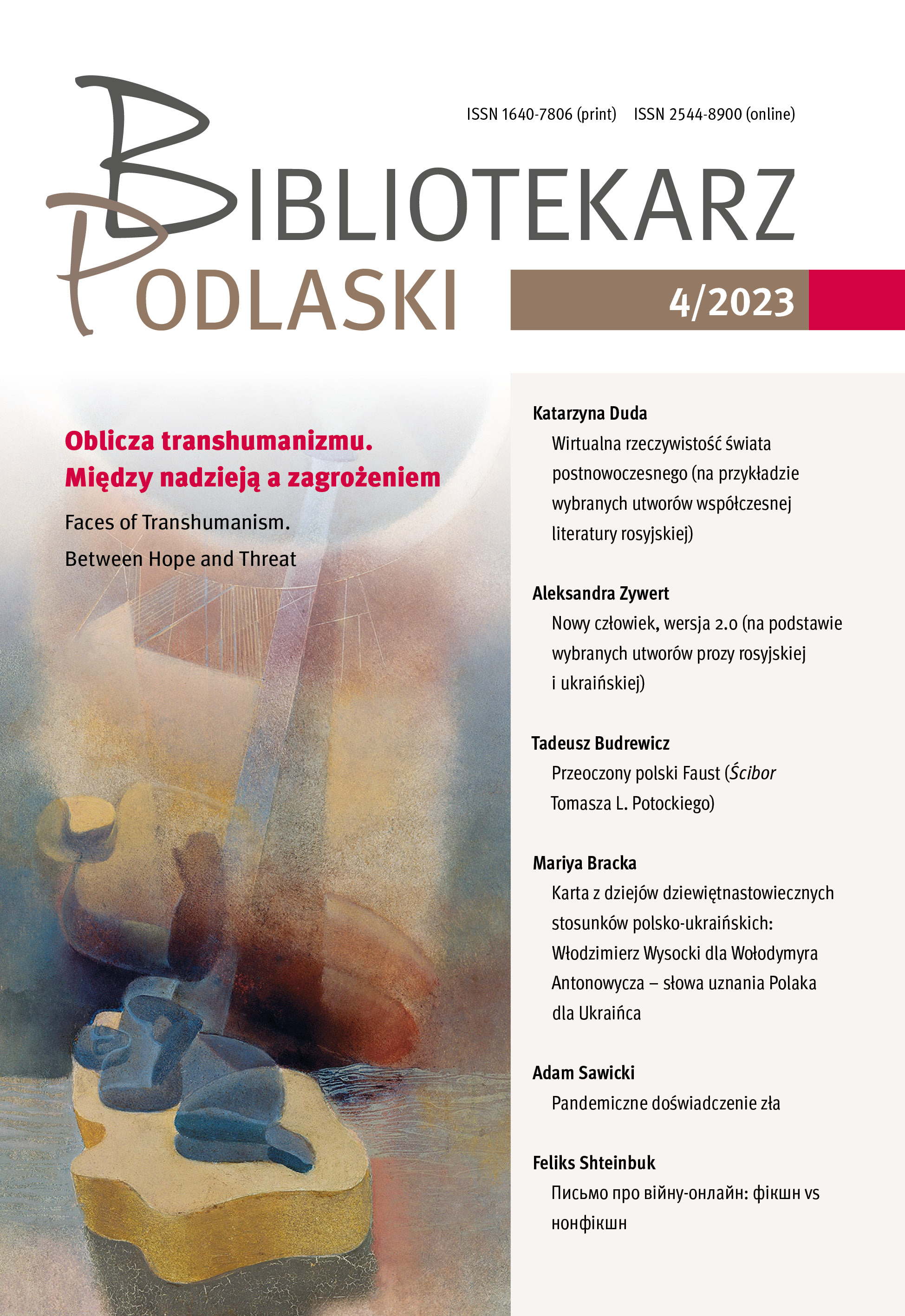Abstract
In the 21st century, concepts of human modification and improvement increasingly
appear in scientific literature, extending beyond the realm of fantasy. Influenced by successful, advanced technological experiments, these concepts are transitioning from literary fiction to more serious philosophical discourse. This ancient quest first found literary expression in the 19th century, notably in the works of Jules Verne. Transhumanism in fantasy is primarily associated with science fiction, featuring human enhancement through advanced technology in narratives about distant futures, space travel, other planets, and the cyberpunk genre. However, the presence of transhumanist themes in fantasy literature receives less attention. In these cases, modifications are typically achieved through spells or the magical properties of potions and plants. In Poland, the most notable example is Andrzej Sapkowski’s The Witcher universe, further developed by CD Projekt Red’s video games. The most literal example is the witchers, monster slayers created through magical mutations. Wizards represent a less obvious group of enhanced characters. Similarly, Princess Cirilla Fiona Elen Riannon embodies transhumanist aspirations. These examples collectively illustrate the diverse manifestations of transhumanism in fantasy literature.
References
Adamczyk A.K., Zawadzki P., Post- i transhumanizm w kontekście wybranych zjawisk artystycznych technokultury, „AVANT” 2019, R. 10, t. 3.
Faleńczyk M., Transhumanizm czy humanizm? Krytyczne spojrzenie na nową ideologię, „Studia Teologiczno-Historyczne Śląska Opolskiego” 2018, nr 1.
Ferrando F., Posthumanizm, transhumanizm, antyhumanizm, meta humanizm oraz nowy materializm. Różnice i relacje, tłum. R. Sapeńko, „Rocznik Lubuski” 2016, t. 42, cz. 2.
GWINT: Mag renegat, CD Projekt Red 2022.
GWINT: Wiedźmińska gra karciana, CD Projekt Red 2017.
Krupa A., Filozoficzna koncepcja człowieka na gruncie posthumanizmu, „Analiza i Egzystencja” 2021, nr 56.
Mazurkiewicz A., Recepcja myśli posthumanistycznej we współczesnym obiegu popularnym, „Rocznik Lubuski” 2016, t. 42, cz. 2.
Mirenayat S.A., Bahar I.B., Talif R., Mani M., Beyond Human Boundaries: Variations of Human Transformation in Science Fiction, „Theory and Practice in Language Studies” 2017, vol. 7, № 4.
Sapkowski A., Chrzest ognia, Warszawa 1996.
Sapkowski A., Czas pogardy, Warszawa 1995.
Sapkowski A., Krew elfów, Warszawa 1994.
Sapkowski A., Miecz przeznaczenia, Warszawa 1992.
Sapkowski A., Ostatnie życzenie, Warszawa 1993.
Sapkowski A., Pani Jeziora, Warszawa 1999.
Sapkowski A., Sezon burz, Warszawa 2013.
Sapkowski A., Wieża Jaskółki, Warszawa 1997.
Szymański K., Transhumanizm, „Kultura i Wartości” 2015, nr 13.
Szymański K., Transhumanizm: utopia czy ekstropia?, „IDEA – Studia nad strukturą i rozwojem pojęć filozoficznych” 2015, nr 27.
Trocha B., Transhumanizm i posthumanizm w literaturze fantastycznej perspektywie kliszy kulturowej i futurologicznej spekulacji, „Rocznik Lubuski” 2016, tom 42, cz. 2.
Wiedźmin, CD Projekt Red 2007.
Wiedźmin 2: Zabójcy królów, CD Projekt Red 2011.
Wiedźmin 3: Dziki Gon, CD Projekt Red 2015.

This work is licensed under a Creative Commons Attribution-ShareAlike 4.0 International License.
Copyright (c) 2024 Paulina Siedlecka


